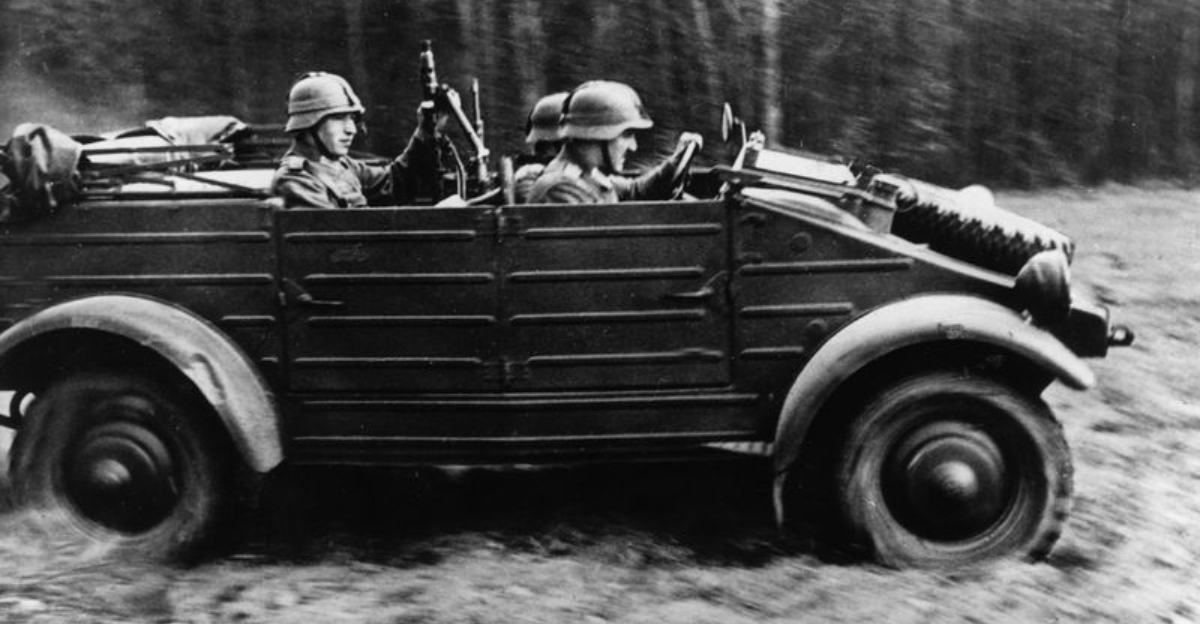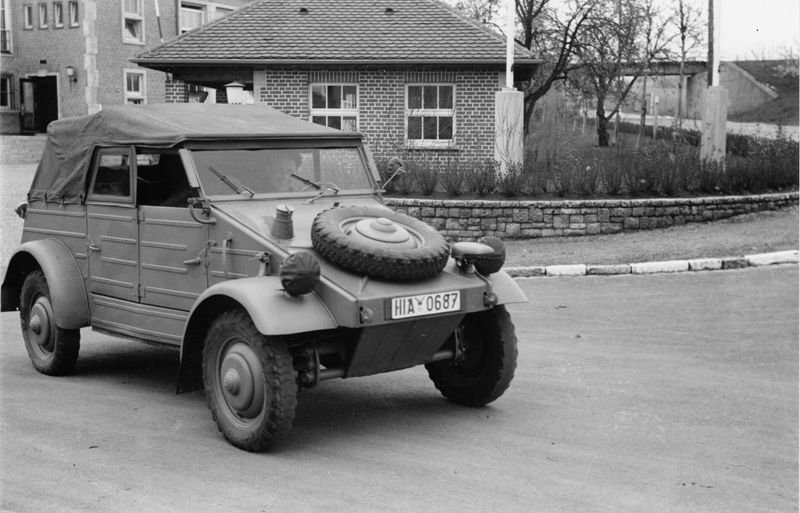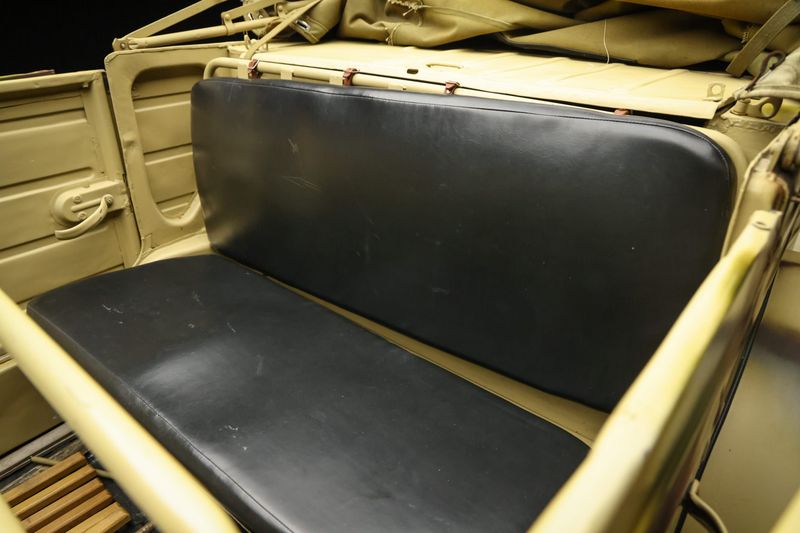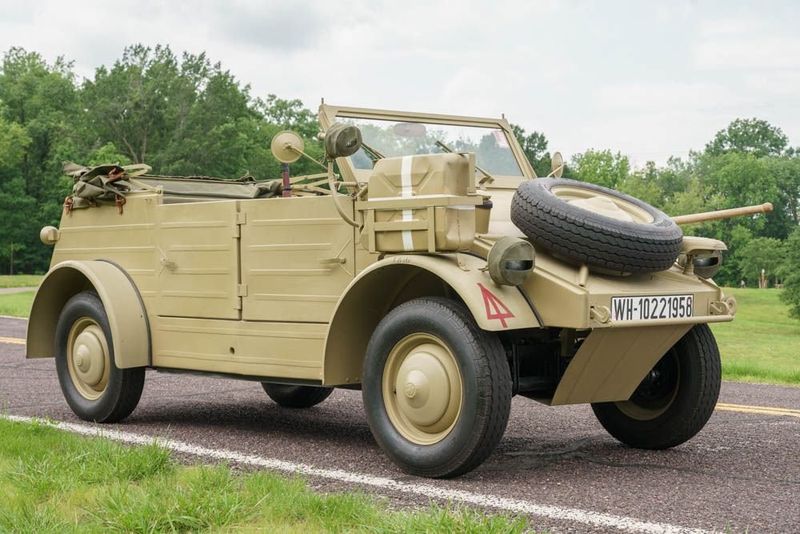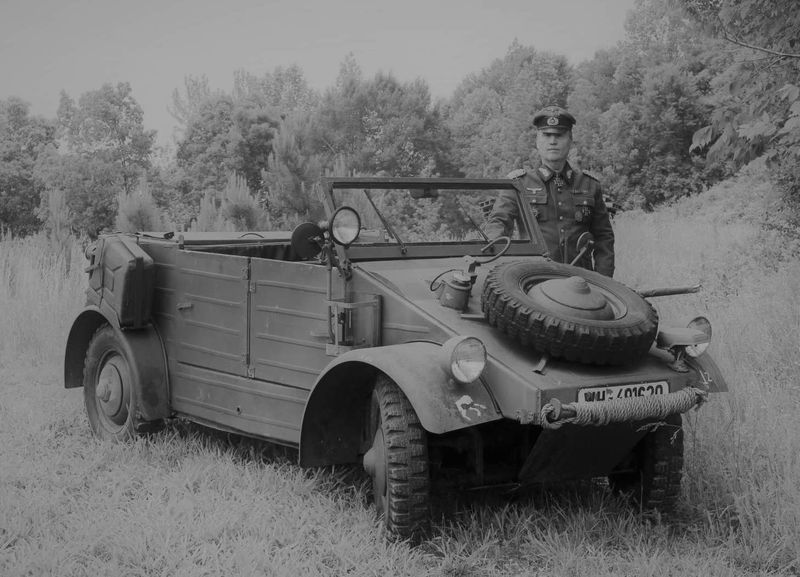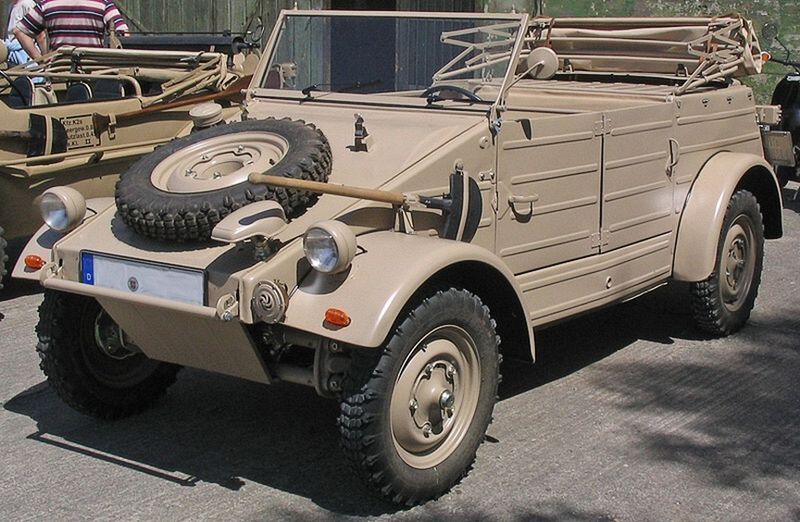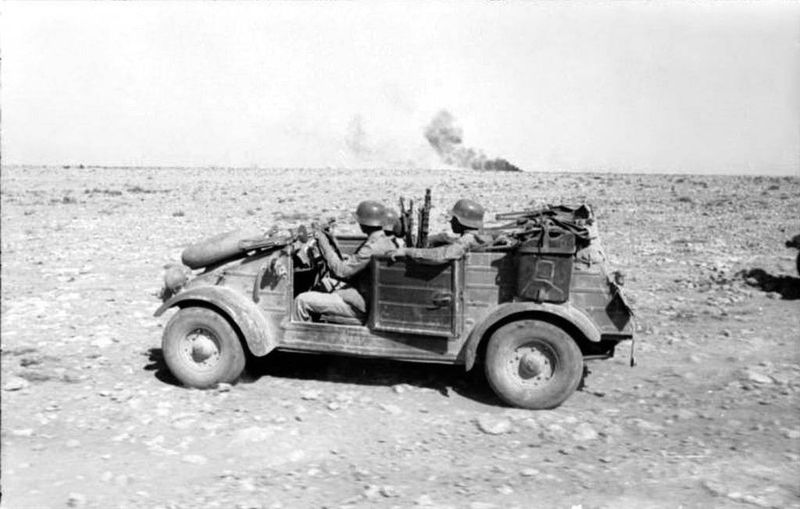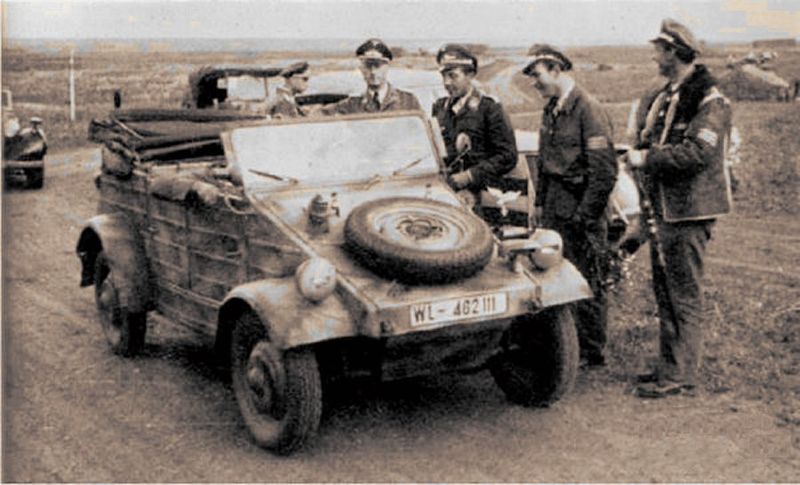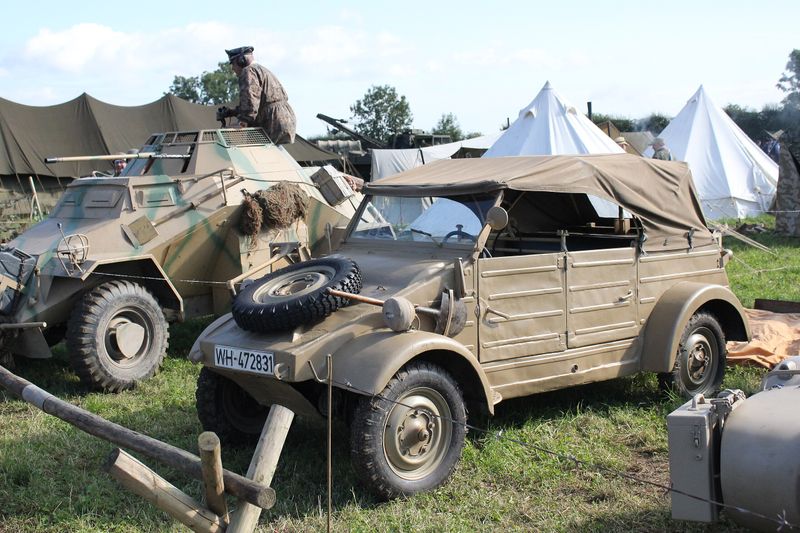When you think of iconic WWII vehicles, the American Jeep probably comes to mind first. But did you know the Nazis had their own version? It was called the Kübelwagen, and while it never gained the same pop culture fame, this strange little war machine had some truly wild stories behind it. Here are 10 facts about the Kübelwagen that prove truth really is stranger than fiction.
1. Designed by Ferdinand Porsche
Ferdinand Porsche, the legendary engineer behind the VW Beetle, also crafted the Kübelwagen. This WWII vehicle shared many components with the Beetle, notably its air-cooled rear engine. This design choice ensured reliability even in the harsh terrains of war. Porsche’s vision was for a robust yet simple vehicle that could support Nazi military efforts. While the Beetle became a symbol of peace, the Kübelwagen was its wartime counterpart—a testament to Porsche’s engineering genius. His dual contribution to both civilian and military automotive history is a fascinating dichotomy, reflecting the complexities of his legacy.
2. Meaning of “Kübelwagen”
The term “Kübelwagen” translates to “bucket car,” a nod to its deep bucket seats designed to keep soldiers securely seated during missions. Officially termed “Kübelsitzwagen,” the name soon became a colloquial term among German troops. These seats weren’t just functional; they were a distinctive feature that differentiated it from other military vehicles. The nickname stuck, becoming synonymous with this unique wartime automobile. This seemingly trivial detail actually highlights a clever design element aimed at enhancing soldier safety and comfort during operations.
3. Lighter than the American Jeep
The Kübelwagen’s design emphasized lightweight agility, tipping the scales at just over 1,500 pounds. This made it lighter than the American Jeep, enabling it to traverse soft sand and snow with ease. Its aluminum body contributed to its featherweight status, allowing it to glide over challenging terrains. Deployment in desert campaigns and on the Eastern Front showcased its ability to perform under adverse conditions. This lightweight design choice was not just about mobility; it was a strategic advantage, offering German forces a versatile vehicle in their military arsenal.
4. Almost Amphibious Capabilities
Though not fully amphibious, the Kübelwagen was engineered to handle water crossings more efficiently than anticipated. Its nearly watertight build allowed it to navigate shallow rivers and streams with relative ease. An adaptation of this model, the Schwimmwagen, even featured a propeller for true amphibious operations. This capability was particularly advantageous in the varied terrains of WWII, where traditional vehicles struggled. The Kübelwagen’s water navigation skills added a unique dimension to its utility, making it an unexpected asset in the field.
5. No 4WD but Excellent Performance
Despite lacking four-wheel drive, the Kübelwagen demonstrated remarkable off-road capabilities. Credit for this goes to its ingenious engineering: a lightweight chassis combined with a flat underbody and portal axles. These features provided surprising traction and maneuverability in difficult terrains. In some controlled trials, it even outperformed the Jeep, proving its worth in specific situations. This clever engineering allowed the Kübelwagen to maintain its reputation as a reliable and robust military vehicle, defying expectations without the traditional 4WD technology.
6. The People’s War Car
The Kübelwagen was envisioned as the “people’s war car,” echoing the Volkswagen’s civilian ethos. This vehicle was meant to be simple, cost-effective, and easy to produce on a large scale. Over 50,000 units were manufactured by the end of WWII, illustrating its widespread adoption. This mass production was part of the Nazi strategy to equip their forces efficiently. The Kübelwagen’s accessibility and functionality made it a staple in the German military, fulfilling its role as a utilitarian wartime vehicle for the masses.
7. Self-Locking Differential Innovation
An intriguing feature of the Kübelwagen was its Zündapp gearbox equipped with a self-locking differential. This allowed for enhanced traction when wheels began to slip, making it exceptionally effective in muddy or icy conditions. Such innovation was vital for maintaining mobility on challenging terrains, ensuring the vehicle could keep moving when others might falter. This feature was a testament to the engineering foresight that went into the Kübelwagen’s design, highlighting its ability to adapt to various battlefield scenarios with minimal modifications.
8. Comfortable Ride for Soldiers
German troops often referred to the Kübelwagen as the “staff car” due to its relatively comfortable ride. Unlike the harsh, jarring experience of other military trucks, it offered smoother travels thanks to shock-absorbing torsion bars and decent legroom. This comfort made it a preferred vehicle for officers and engineers who required a dependable mode of transport. The Kübelwagen’s ability to provide a respite from the physical strain of war was a valued feature, contributing to its favorable reception among its users.
9. Propaganda on Wheels
The Kübelwagen wasn’t just a military tool; it was also a vital piece of Nazi propaganda. Frequently featured in newsreels and photo ops, it portrayed the technological prowess of the German forces. In many WWII propaganda clips, it can be seen speeding across deserts or trailing behind the famous General Rommel. This imagery was crafted to instill pride and demonstrate superiority, using the Kübelwagen as a symbol of innovation and power within the Nazi regime’s narrative.
10. Collector’s Item Today
Today, the Kübelwagen has transitioned from a wartime vehicle to a collector’s gem. Restored models are sought after by military history enthusiasts and vintage car collectors alike. These historical artifacts can fetch significant sums at auctions, offering a tangible connection to WWII’s complex past. However, owning such a vehicle comes with its own set of challenges, including navigating the historical implications and the curiosity it inevitably sparks. The Kübelwagen remains a fascinating piece of military history, intriguing and controversial in equal measure.
